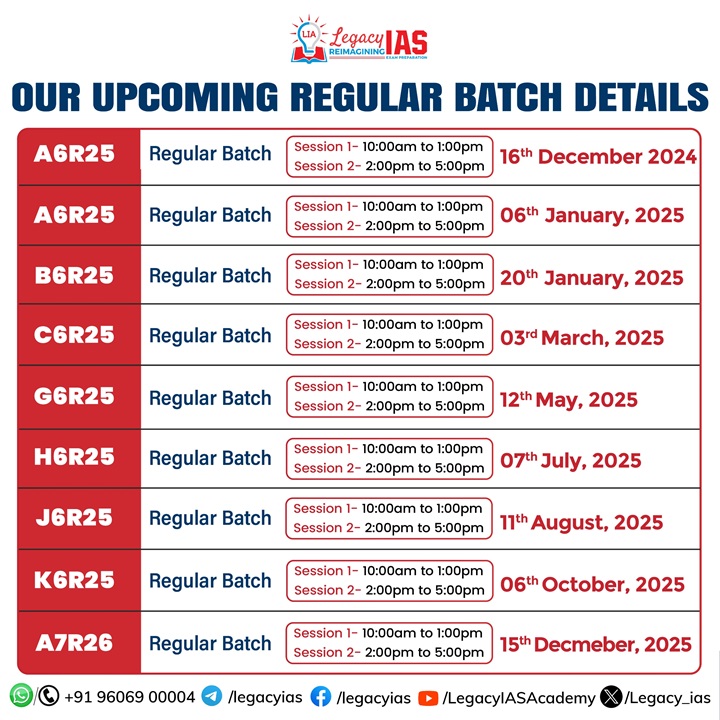Context:
Recent disturbances in Manipur have once again brought to the forefront the critical discussions surrounding Centre-State relations, specifically in the context of the Central government’s involvement in managing internal state crises. This resurgence of violence underscores the operational challenges and the importance of emergency provisions designed to address such exigencies effectively.
Relevance:
GS II: Polity and Governance
Dimensions of the Article:
- What is an Emergency?
- Types of Emergency in the Indian Constitution
- How Many Times Emergency was Imposed in India?
What is an Emergency?
- Definition: An emergency refers to legal provisions within a nation’s constitution or laws that allow the government to act swiftly in response to extraordinary circumstances like war, rebellion, or crises threatening the nation’s stability, security, sovereignty, or democracy.
- Articles: These provisions are detailed in Articles 352 to 360 under Part XVIII of the Constitution.
- Inspiration: The emergency clauses in the Indian Constitution are influenced by the Weimar Constitution of Germany.
- Significance: These provisions grant the executive branch temporary powers to bypass standard legislative procedures, restrict certain rights and freedoms, and implement policies that would usually be outside its jurisdiction under normal circumstances.
Types of Emergency in the Indian Constitution
National Emergency (Article 352):
- Conditions: Under Article 352, the President can declare a state of emergency if the nation’s security is threatened by war, external aggression (External Emergency), or armed rebellion (Internal Emergency). The term ‘armed rebellion’ was introduced by the 44th amendment, replacing ‘internal disturbance’.
- Powers: The declaration allows the executive to suspend fundamental rights (except Articles 20 and 21) and take necessary actions to manage the crisis.
- Approval: The proclamation must be approved by both houses of Parliament within one month. If issued when the Lok Sabha is dissolved, it survives until 30 days after the first sitting of the reconstituted Lok Sabha, with Rajya Sabha’s approval.
- Duration: Once approved, the emergency can last for six months and be extended indefinitely with six-monthly parliamentary approvals by a special majority.
- Revocation: The President can revoke the emergency without parliamentary approval, but it must be revoked if the Lok Sabha passes a resolution by a simple majority.
- Scope: The proclamation can apply to the entire country or a specific part, as allowed by the 42nd Constitutional Amendment Act of 1976.
State Emergency or President Rule (Article 356):
- Imposition Examples:
- Maharashtra (2019): Imposed for a short period due to political uncertainty post-assembly elections.
- Uttarakhand (2020): Imposed briefly due to a political crisis involving a floor test.
- Uttar Pradesh (1991-1992): Following the assassination of Prime Minister Rajiv Gandhi and ensuing instability.
- Punjab (1987-1992): Due to heightened militancy and internal disturbances.
- Judicial Review: The Supreme Court, in cases like S.R. Bommai vs Union of India (1994) and Rameshwar Prasad vs Union of India (2006), has set guidelines for the use of Article 356, establishing that imposing President’s Rule is subject to judicial review. The President’s satisfaction must be based on relevant material, and the State Legislative Assembly should only be dissolved after Parliament’s approval.
Financial Emergency (Article 360):
- Conditions: The President can declare a financial emergency if the financial stability or credit of India or any part is threatened.
- Powers: During such an emergency, the President can reduce the salaries and allowances of all or any class of persons in civil services, including judges of the Supreme Court and High Courts. The central government also gains control over state financial resources.
- Approval: The proclamation must be approved by both houses of Parliament within two months. If not approved, it ceases to have effect. The President can revoke or vary the proclamation at any time.
- History: Unlike national and state emergencies, a financial emergency has never been proclaimed in India.
How Many Times Emergency was Imposed in India?
- Occurrences: National Emergency has been proclaimed 3 times in India:
- Indo-China War (1962): Declared due to “external aggression” during the Sino-Indian War.
- Indo-Pak War (1971): Imposed on grounds of “external aggression” during the Indo-Pakistani War.
- 1975-1977: The most controversial, declared due to “internal disturbance” amidst political unrest, leading to significant suspension of civil liberties.
-Source: The Hindu



